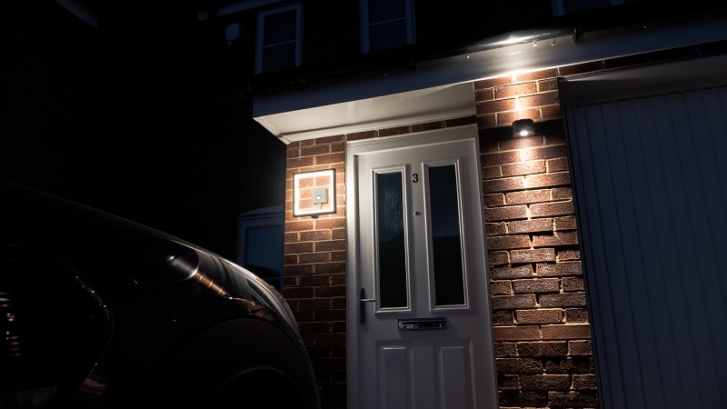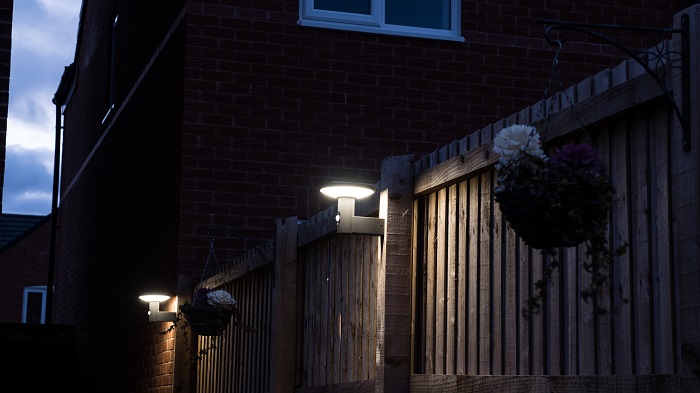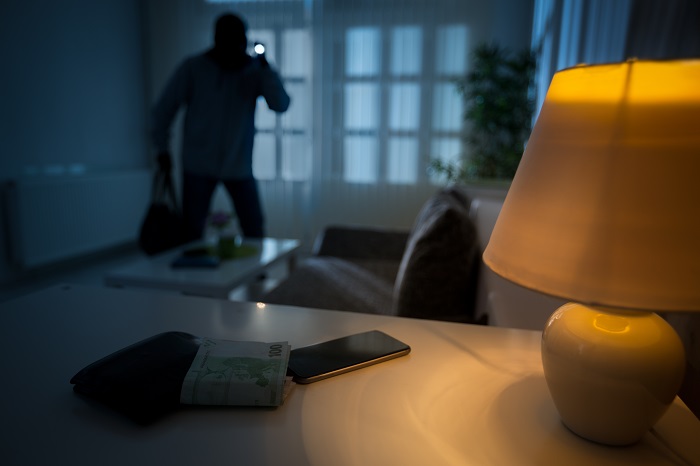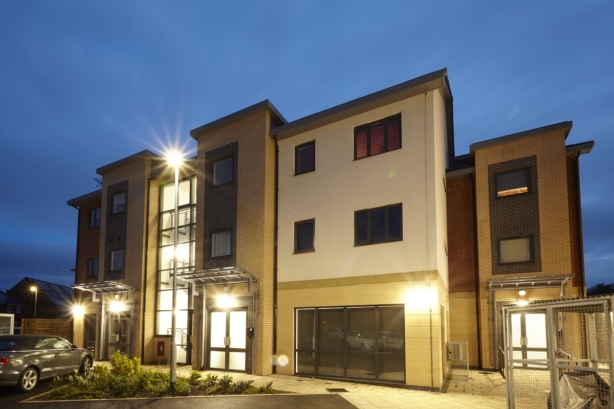
We are a leading manufacturer of quality internal and external lighting products for commercial, industrial and retail applications.
View all productsAt Ansell Lighting we design and manufacture an extensive range of luminaires for a diverse number of sectors and applications. Whatever the shape, purpose or style of your space, we have a lighting solution.
View all sectors & applicationsWe are a leading manufacturer of quality internal and external lighting products for commercial, industrial and retail applications.
Welcome to Ansell lightingWe are here to answer any questions you may have, help you find a stockist or speak to a local member of our team.
OCTO delivers the complete smart lighting package to transform the efficiency and ambience of commercial and residential spaces.
Find information regarding our product warranty, product data downloads and FAQs regarding lighting and technical terms. Here you will find support with training CPDs as well as useful lighting design and LED strip calculators.
Lighting for Security

The security of the residential home is of the greatest importance to the homeowner and it is generally accepted that during the hours of darkness, external security lighting can assist in reducing the possibility of intruders gaining access to the interior parts of the property, however unfortunately, this does not always provide the guarantee of deterring the criminal. It would have been great to think that just placing some lights around the home prevents the intruder targeting the property, whereas, it is normally considered that the primary reason for installing external lighting is for that of safe access around garden and in also extending the opportunity of spending time outdoors as well as gaining the enjoyment and benefits of the garden into the darker hours.
In writing this editorial, it may be worth taking a few lines to consider the process in the committing of criminal acts against residential properties. It would appear that there is some pattern of the decision process being made for domestic based crimes, with some properties being targeted and planned in advance based upon property location, its appearance and the impression of how affluent the homeowner is, whilst others are basically those being targeted on a more opportunist attempt, such as when a potential intruder walks past and identifies an opportunity.
Of great importance is what factors are required by the homeowner to deter the individual from attempting to gain access to the property and does the installation of an exterior lighting system provide benefit?
I would suggest that electric lighting at night does make most people feel safer within their environment, whether that be at home or out on the streets and the installation of a security based lighting system, either all-night based or sensor controlled with a switched override, can allow the homeowner the ability to view well illuminated spaces within the garden and driveway areas at night, thereby offering a level of reassurance that no person is trespassing around the exterior areas of their home. This can be considered as an effective measure against the fear of crime, with the homeowner feeling safe and secure inside the property behind the locked doors and windows.
Unfortunately, the resultant scenario as to whether or not the installation of exterior lighting alone offers the security of preventing the criminal acts by intruders attempting to enter the home is rather more of an opaque situation. In some cases, the installation and operation of security lighting may be considered as being counter-productive in that the illumination from the security lighting, when activated or continuously on, may actually in fact provide an environment in which the level of crime could increase.
The individuals looking to gain access to the property, may consider that having the ability to visualise the situation clearly when approaching the property is of greater benefit than if the area was in complete darkness, however when security lighting is used in conjunction with the other measures, such as securely locked windows, an audible alarm system and possibly security cameras, can provides a beneficial package of hopefully preventing theft. It is advocated that the installation of security lighting is most productive when working alongside other measures, all of which can be taken together to provide a cohesive system to reduce the possibility of intruders gaining access to the property.
Before just placing lighting everywhere around the residential home, consider carefully, where to position and install the security lighting and what type of equipment offers the optimum solution for the application.
Next is the system of operation, whether it be by manual switching, by photocell control illuminating for the hours of darkness, or by that of sensor control which is activated through movement within the area of detection. Alternatively, the control may be a smart based solution which can, in addition to manual or timed switching and by activation through movement, be operated through a mobile phone or tablet remotely by the homeowner.

The selection of the specific equipment and how it is anticipated that the lighting will be used, falls into one of two scenarios of operation. Firstly, the illumination of areas which can clearly be seen by the homeowner when safely inside the property and can also be seen from the surrounding properties and/or by people walking innocently past the property in the street. Secondly, the illumination of the areas which cannot be seen by the homeowner and which are not overlooked from adjacent properties as well as having no clear line of sight from the street.
For the first scenario of spaces which can be visually seen by both the homeowner, by neighbouring residents and by the public when passing the location, the use of permanently activated lighting by either manual switching, controlled through a photocell or being activated by the use of Passive Infrared or Microwave detection offers a beneficial solution. Lighting will be either on during the hours of darkness or be activated upon detection allowing visibility of any potential intruder when making an approach towards the property, by either the homeowner by neighbours or the general public, making them aware of the intruder’s existence and hopefully deterring the intruder from attempting to gain access.
This form of security lighting presents an ideal opportunity for the frontal areas of the property and possibly the driveway to the front and side as well as to the front of the garage. These are all areas which are clearly visible by the homeowner, from adjacent properties and from the street. Where there is a gated driveway, lighting can be so positioned as to illuminate the outside of the gate, in that any attempt to climb over may take some time and effort, increasing the likelihood of being seen. In each case upon detection and activation of the lighting, it announces to the potential intruder of having been seen, allowing then to retract away from the property.
As many properties back onto other properties, the likelihood of the rear garden area being seen from those overlooking properties to the rear is increased and even though site from the street is not possible, lighting may be of similar type to that being installed at the front and side of the property as any activation can alert neighbours in close proximity of the intruder access. Where the garden is not overlooked or is located in a more rural location, where close neighbours do not exist, having lighting which activates upon detection, may provide little or no benefit and in these cases, utilising the installed garden feature lighting may offer the homeowner the solution to seeing the space from a position of security inside the property.
For the second scenario of the hidden areas of the garden or if the property is in a more rural location, having automatically controlled security lighting might have seemed the best way to go, however, if upon its activation through detection of movement, there is actually no person within the vicinity to visually see that the lighting has been activated, then it may be considered an inappropriate solution.
The individual approaching the property would probably have expected some form of security-based lighting to be activated in this way and would have thought of alternative actions to prevent being seen. In these types of situations, it should be asked, for whom does the lighting, which cannot be seen by anyone, benefit most, either the homeowner or the intruder?
In providing illumination through detection, the light produced may actually make any attempt by the intruder to gain access much easier, as they will at the very least, be able to see the actions required to gain entry and will also have clear sight of anyone else approaching, from either the property or adjacent properties and be able to determine the likelihood of being challenged and a route to escape.

Lighting operated through detection is usually designed to provide illumination of the horizontal space in which the lighting is positioned, however some activated lighting of this type can so positioned where the installed fittings have an excessively high level of inclination so as to provide a very bright light aimed directly towards the intruder, preventing them from seeing clearly the property being approached. This form of lighting has been termed by others, as being that of ‘barrier lighting’ in that, it is positioned to illuminate the vertical extremities of the properties forming an illuminated ‘barrier’ between the potential intruder and the property. Whilst this may be a solution used in more rural locations where neighbours are very few and far between, there is certainly an issue with illuminating in this way in the more built up areas, where the uncontrolled beam gives significant unwanted glare and its use may cause major issues with the residents of surrounding properties or with the public. This may also create the issue of light trespass, into neighbouring properties, meaning that the controlled beam option is certainly the more preferred solution where the security lighting is well positioned and aimed correctly retaining all illumination within the confines of the property being illuminated.
In concluding, it can be said that using external lighting for security is beneficial, however consider carefully the application and the surrounding vicinity as this will determine, where and how much lighting equipment is required and also how best to operate it. This will, in conjunction with other forms of deterrent, provide security to the residential home, most people’s greatest asset.
You Might Also Be Interested In...

